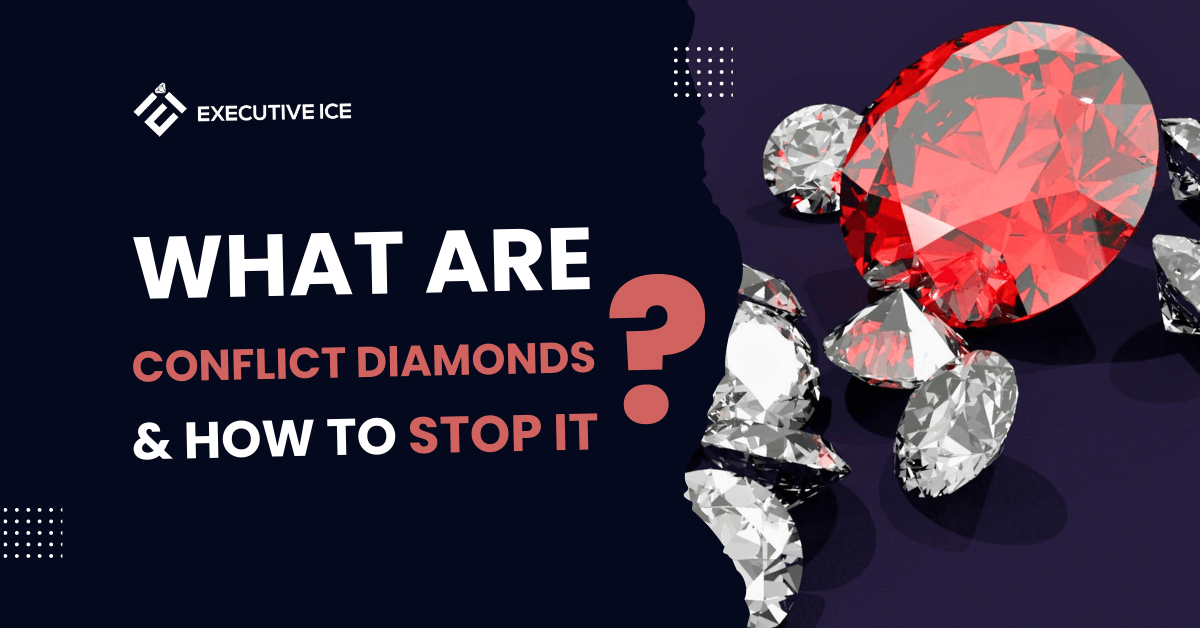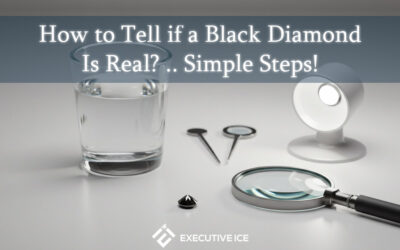Diamonds, with their dazzling beauty and elegance, are indeed an enchanting sight.
Their brilliance often captivates our imaginations and their symbolism of enduring love and commitment makes them a precious token of affection. However, beyond this façade of beauty and romance, there lurks a darker truth.
Certain diamonds, infamously known as “blood diamonds” or “conflict diamonds,” are mined under conditions of extreme human rights abuses and violence. These gems, originating from some of the most impoverished and war-torn nations of West and Central Africa like Sierra Leone and the Democratic Republic of Congo, have been implicated in funding devastating wars, child labor, and various forms of exploitation.
What Are Conflict Diamonds?
The term “conflict diamonds” or “blood diamonds” refers to diamonds mined in war zones and sold to finance armed insurrections against legitimate governments. The rebel factions controlling these mines sell the diamonds to amass the funds required for their military campaigns, perpetuating violence, civil unrest, and human rights abuses.
Since the late 1990s, these diamonds have been the catalyst of some of the most gruesome wars in Africa, leaving indelible marks on society’s fabric.
Conflict diamonds have far-reaching societal implications. Aside from fueling violent conflicts, they also contribute to child labor and exploitation.
Miners, often including children, are forced to work under hazardous conditions with minimal or no compensation, pushing them into a cycle of poverty and deprivation. Despite various efforts to curb this trade, conflict diamonds continue to infiltrate the global market.
Therefore, it becomes imperative for global communities and consumers to play their part in mitigating these issues.
By consciously choosing ethically sourced diamonds or considering alternatives like lab-grown diamonds, one can help suppress the demand for conflict diamonds, thus chipping away at the power and resources of these disruptive elements.
Additionally, supporting initiatives that promote fair trade and better labor conditions can contribute towards improving the lives of those exploited in the diamond mining industry.
The Unsettling Reality
1. Perpetuation of ViolenceWhile many of the diamond-related conflicts in Africa may have ceased, the aftermath continues to fester in the form of ongoing violence and discord. The crux of the problem often lies in the power struggle between rival factions, each vying for control of these lucrative diamond mines. This competition often spirals into armed conflicts, breeding an environment of perpetual fear and unrest in these regions.
2. Exploitation and Labor Abuse
A particularly disturbing aspect of conflict diamond mining is the rampant exploitation of vulnerable populations. Power-holders often coerce defenseless individuals, including women and children, into forced labor, subjecting them to appalling and perilously unsafe working conditions. The workers, who risk their lives every day in the diamond mines, are paid a pittance, with an estimated million miners earning less than a dollar a day. This disproportionate pay structure, juxtaposed against the high value of the diamonds extracted, exacerbates poverty levels in these mining communities.
3. Political Turmoil and AnarchyAs previously noted, rebel groups often seize control of diamond mines, using the profits from their illicit diamond trade to procure weapons and other resources to wage war. Their ultimate goal is to create widespread anarchy and destabilize legitimate governments, thereby obtaining a stronger foothold in the region. This vicious cycle perpetuates political instability and hampers the growth and development of these nations.
The Bloody Trail
So where do the diamonds go after they have been mined? They are usually smuggled into foreign countries. It is estimated that blood diamonds account for anything from 4 to 15% of the total global diamond trade. While it might be hard to trace exactly where the diamonds end up, it is a safe bet to say they are traded as jewelry in pretty much every global economy. So what can you do to avoid buying them? Check out the guidelines below.
The Limitations of The Kimberley Process
In an attempt to stem the flow of conflict diamonds, the Kimberley Process was established in 2003.
This scheme aimed to certify the sourcing of diamonds, ensuring they were conflict-free. However, its efficacy has been called into question.
The Kimberley Process has been critiqued for its narrow definition of conflict diamonds, limited to diamonds financing rebel movements against recognized governments, while overlooking human rights abuses by governments or private security firms in the mining areas.
Additionally, the absence of a robust independent monitoring and enforcement system has hindered its effectiveness.
Navigating Your Way to Ethical Diamonds
Recognizing the origins of a diamond just by looking at it can be a near-impossible task. Therefore, if you are passionate about making ethical choices, here are some crucial steps you can consider:
• Examine the Jeweler
Begin your inquiry at the point of sale by asking your jeweler about their diamond sourcing practices.
Some jewelers can provide exact details about the origins of their diamonds. However, beware that not all jewelers are forthright about this information, either due to lack of knowledge or a reluctance to reveal the truth about their diamonds’ conflict-ridden origins.
If the jeweler’s response does not satisfy your concerns, request further details or the diamond’s System of Warranties statement, which certifies the diamond as conflict-free.
• Trace the Source
If possible, acting as a detective can be quite enlightening. By tracing the diamond’s journey back to its origin, you can gain a comprehensive understanding of its background.
Typically, diamonds originating from war-stricken African nations such as Zimbabwe, Angola, Congo, and Sierra Leone are potentially conflict diamonds.
However, it’s important to note that not all African diamonds are blood diamonds. Certain nations like Botswana and Namibia enforce ethical mining practices, and their government tightly regulates the mining sector. Canada is also known for its conflict-free diamonds, courtesy of its stringent mining laws that safeguard both miners and the environment.
To trace a diamond’s source, consider the Kimberley Process Certification Scheme, adopted by the United Nations (UN) in 2002.
This scheme certifies diamonds as conflict-free if they comply with the organization’s regulations, and these diamonds are then permitted to enter the free market. The certified diamonds usually come with their Kimberley Process certificate, displaying their origins. If your jeweler cannot present this certificate upon request, consider it a red flag.
• Choose a reputable jeweler
The simplest way to steer clear of conflict diamonds is to patronize a jeweler renowned for dealing exclusively with conflict-free jewelry. These jewelers often openly and willingly answer your queries since they have nothing to conceal and frequently market their stores as conflict-free.
We’ve created a list of the most trust-worthy retailers that offer conflict-free diamonds.
Final Thoughts
The existence of blood diamonds in the market should not deter you from appreciating the beauty of these precious stones.
Instead, it should inspire more conscientious jewelry selection to avoid inadvertently supporting violent conflicts. The guidelines provided above can empower you to distinguish between conflict and conflict-free diamonds.
By choosing a reputable jeweler and demanding a diamond’s certification, you can confidently adorn yourself with ethically sourced diamonds that shine as brightly as your principles.




